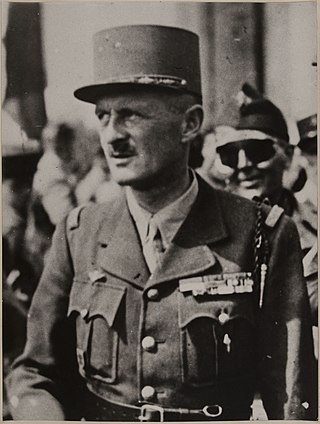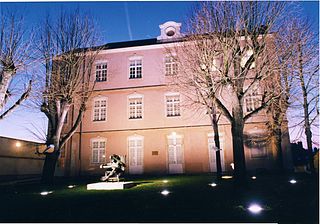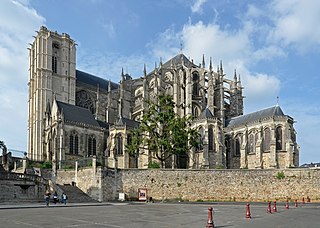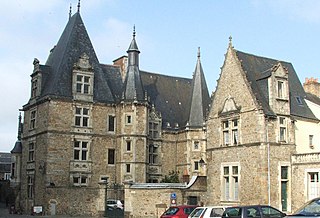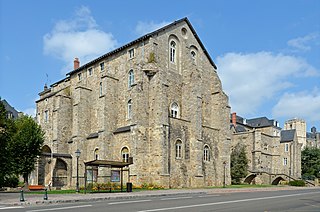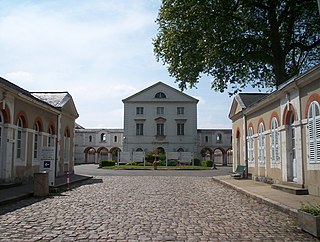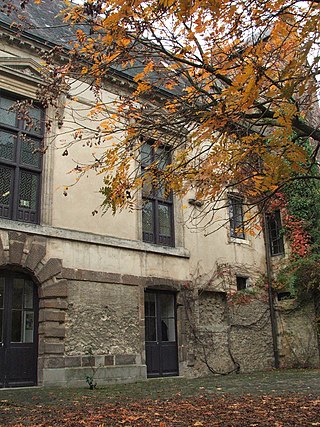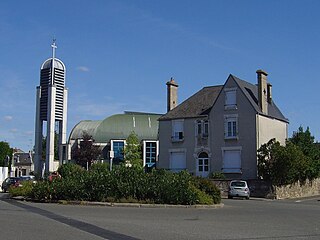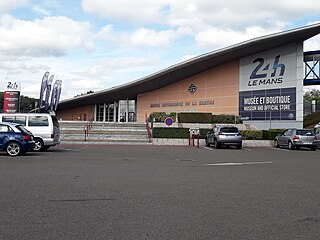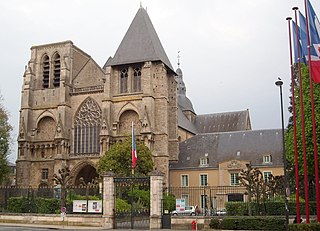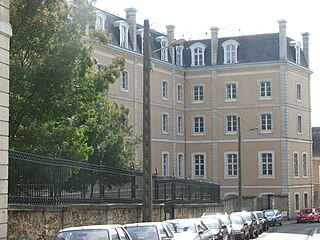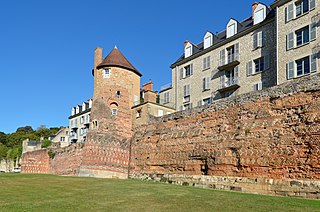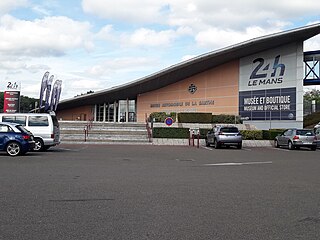16 Sights in Le Mans, France (with Map and Images)
Legend
Premium Sights
Book tickets, guided tours and activities in Le Mans.
Guided Free Walking Tours
Book free guided walking tours in Le Mans.
Welcome to your journey through the most beautiful sights in Le Mans, France! Whether you want to discover the city's historical treasures or experience its modern highlights, you'll find everything your heart desires here. Be inspired by our selection and plan your unforgettable adventure in Le Mans. Dive into the diversity of this fascinating city and discover everything it has to offer.
Sightseeing Tours in Le Mans1. Général Leclerc de Hautecloque
Philippe François Marie Leclerc de Hauteclocque was a Free-French general during World War II. He became Marshal of France posthumously in 1952, and is known in France simply as le maréchal Leclerc or just Leclerc.
2. Musée de Tessé
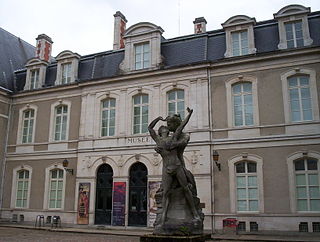
The Musée de Tessé is the fine arts museum of the city of Le Mans in France. It offers many guided tours on various themes and is located on the fringes of the natural setting of the Quinconces des Jacobins and the Parc de Tessé.
3. Musée Vert - Muséum d'Histoire naturelle
The Green Museum, classified as a Museum of France, is the natural history museum of the city of Le Mans. It is located in the South-West sector, in the center of the Jaurès district and not far from Pontlieue.
4. Saint Julian Cathedral
Le Mans Cathedral is a Catholic church situated in Le Mans, France. The cathedral is dedicated to Saint Julian of Le Mans, the city's first bishop, who established Christianity in the area around the beginning of the 4th century. Its construction dated from the 6th through the 15th century, culminating in 1430 and it features many French Gothic elements.
5. Musée Jean-Claude-Boulard / Carré Plantagenêt
The Museum of Archaeology and History of Maine, or officially the Jean-Claude-Boulard Carré Plantagenet Museum, is a museum located in the city of Le Mans, in the Saint-Nicolas district, close to the central sector. Completely restored and refurbished by architect Bernard Althabegoity, it was officially opened on 19 June 2009 and opened to the public the following day.
Wikipedia: Musée d'archéologie et d'histoire du Mans (FR), Website
6. Palais du Grabatoire
The Palais du Grabatoire is the current episcopal residence of the Bishop of Le Mans. It is a former canonical palace built in the first half of the sixteenth century for Jean de Couthardy. The palace is located in the Cité Plantagenêt district, the historic heart of Le Mans. The building faces the west door of the Saint-Julien Cathedral, Place du Cardinal Grente. Its name has commonly been reduced to Grabatoire or the Hôtel du Grabatoire. Its surface is of an unusual size. Very few documents, books or magazines from Le Mans have retraced the history of the building. It is one of the city's most unknown monuments. Le Grabatoire has been listed as a historical monument since 1927.
7. Mairie du Mans
The collegiate church of Saint-Pierre-la-Cour is a former collegiate church located in the city of Le Mans. This is the former church dedicated to the Counts of Maine whose palace was adjacent. Built like the cathedral straddling the Gallo-Roman wall, it is attested as early as the High Middle Ages. Initially a simple chapel, it was endowed with a chapter of canons by Hugh I, who was also the first count to consider Saint-Pierre as his personal chapel. The collegiate church then benefited from the rise of the Count dynasty, and Count Elias I had it rebuilt at the end of the eleventh century. Until the Revolution, it contained the relics of Scholastica, the patron saint of Le Mans, who was invoked in particular against fires. Henry II of England restored the collegiate church in the twelfth century, but it was above all the addition of the monumental two-storey chevet in the thirteenth century by Charles II of Anjou that completed the building's imposing stature.
8. Étoc Demazy
The Etoc-Demazy Hospital is a historic psychiatric hospital in the city of Le Mans, opened in 1828 located in the Novaxis district. It was closed in 2011 in order to be transferred to the Allonnes hospital, located in the Le Mans area. The buildings have a historical importance for the city, a study was undertaken by the Ministry of Culture for the Mérimée base, then cancelled. The Etoc-Demazy hospital has been classified as a historical monument since 2001.
9. Parc de la Préfecture
The Parc de la Préfecture is a French public park located in the city of Le Mans. It is located just behind the prefecture of Sarthe. This park is private, not usually accessible and reserved for the prefecture. However, it is open to the public during Heritage Days. The park is exactly 22,630 m² and is included in the former ensemble of the Abbey of La Couture, including the monastic buildings, the abbey church and the enclosure. It is particularly known for having been the inspiration for the poem Mardoche by Alfred de Musset, who was visiting Le Mans at the time.
10. Hôtel de Vignolles
The Hôtel de Vignolles is located in Old Mans, Place Saint-Pierre. It was built in 1549 by Jean de Vignolles. The hotel was never finished. Its architecture is of a local Gothic style. Its circulation axis is resolutely vertical due to its transition architecture. The hotel is part of a particular position in the city, bringing a revival to the traditional 15th century party. The hotel is widely marked by the stately architecture of Haut-Maine, however. However, it attests to similarities in the roots of rural and urban seigniorial residences. If its construction is not, by definition, luxurious; Its spreading on the ground is monumental compared to the other hotels built mainly in height, within the Old Mans. Its particular architecture located it halfway between Parisian architecture and Loire architecture, such as the position of the city and its natural attractions on the map of France. There is no doubt that Vignolles was particularly attentive to the effect produced on the visitor. First, he wanted to bring more Parisianism to Le Mans with its external architecture. Then he took into account the visitor's approach. The goal was certainly to impress, flatter and dominate all the fine flower of regional Protestantism and in particular Saumur Protestantism. The Hôtel de Vignolles is the typical example of the National Hotel National which will be built in Paris as elsewhere in France until the middle of the 17th century. Property of the city of Le Mans since 1926, the hotel is partially classified as historic monuments in 1946. Even today, restorations continue, a division in two of the hotel in 1799 having deeply marked or even disfigured its original beauty .
11. Église Saint-Bertrand
The Church of Saint-Bertrand is a religious building located in the city of Le Mans, in the Gare Sud district. The church was founded in 1913, in honour of Bertrand, presumed founder of the monastery of La Couture in the seventh century, in a new parish, the first in the city since the concordat of 1801.
12. Musée des 24 Heures
The Museum of the 24 Hours of Le Mans is a motorsport museum located at the Circuit de la Sarthe in Le Mans, France. It was founded in 1961 as the Automobile Museum de la Sarthe. In 1991, it was taken over by the organizers of the 24 hours road race and moved to a purpose built museum complex under the direction of Francis Piquera, the Executive Manager.
13. Église Notre-Dame-de-la-Couture
Notre-Dame de la Couture is a church in Le Mans. Formerly the abbey church of Saint-Pierre de la Couture Abbey, it is in the centre of the present-day town. It mainly dates to the 12th century - it shows many similarities to Le Mans Cathedral and Angers Cathedral, both built at about the same time. Its large westwork is framed by two differently-designed towers and other former abbey buildings abut the church, with the prefecture for Sarthe now occupying those on the south side. It was classed as a historic monument in 1840.
14. Collège des Oratoriens
The Collège de l'Oratoire or Séminaire des Oratoriens is a former teaching building located in Le Mans. It is now the Lycée Montesquieu and was for decades the boys' high school of Le Mans. The Collège de l'Oratoire is located to the east of Vieux-Mans and is now administratively attached to it. It was built in 1599 on the territory of the Saint-Ouest-des-Fossés suburb. The college chapel has been classified as a historical monument since 1982.
15. Enceinte romaine
The Gallo-Roman enclosure of Le Mans, also referred to as the Roman enclosure of Le Mans, is located in the city once known as Vindinum or Vindunum. This city was the capital of the Gallic people, the Aulerci Cenomani. The construction of the enclosure began during the Late Roman Empire. While it was previously believed to date from the end of the 3rd century, recent studies suggest a construction date at the beginning of the 4th century.
16. Musée automobile de la Sarthe
The 24 Hours of Le Mans Museum, created in 1961 as the "Musée automobile de la Sarthe" and renamed the "Musée des 24 Heures - Circuit de la Sarthe" in 2009, is a French museum dedicated to motor racing located near the main entrance to the 24 Hours circuit in Le Mans.
Share
How likely are you to recommend us?
Disclaimer Please be aware of your surroundings and do not enter private property. We are not liable for any damages that occur during the tours.
